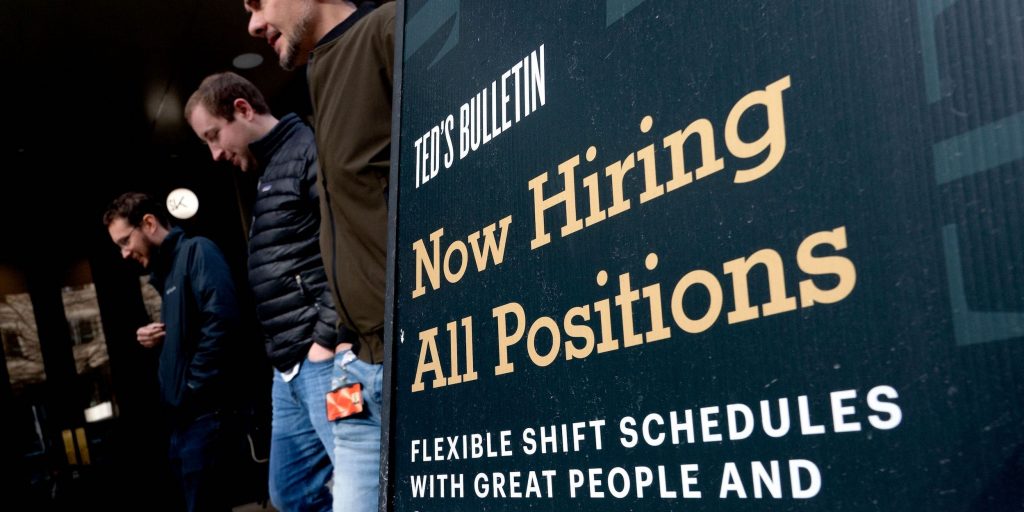- The US is back to its pre-pandemic payroll count, and unemployment is back to 50-year lows.
- Yet the recovery has been extremely uneven and affected by several pandemic-era trends.
- While some sectors have rebounded and then some, others are struggling to hit their pre-crisis headcounts.
The US is back to record-high employment after 29 months of recovery, but several industries have been left behind.
Data out Friday showed the economy adding another 528,000 nonfarm payrolls in July, bringing the country's total count above the pre-pandemic peak. The unemployment rate also finished its recovery, sliding back to the early 2020 low of 3.5%. After more than two years of rapid rehiring and an unprecedented worker shortage, the labor market is largely healed.
Yet the headline payroll count doesn't tell the entire story. The rebound, while swift, has been extremely uneven across industries. The initial months of recovery saw manufacturers and remote-work-friendly industries fare much better than in-person businesses like restaurants and hotels. The reopening of the economy in early 2021 flipped the script and opened the door for large-scale hiring across the service sector.
Clear winners and losers of the hiring recovery have since emerged, and those in the former category are leagues ahead of their pre-crisis employment levels based on percent changes. The warehousing and storage sector is one that quickly regained the jobs it lost and has continued to see employment soar, buoyed by the surge of online shopping and shipping demand. The sector boasts 475,000 more payrolls than it did in February 2020. That's up 36% from the pre-pandemic high based on data going back to 1990.
The couriers and messengers sector is another that rapidly brought on workers through the pandemic. As of July, the industry is up around 236,000 jobs compared to February 2020, or nearly 27% above its pre-pandemic level.
Other information services, which includes a broad range of tech companies, similarly rebounded and now has 71,000 more jobs than its pre-crisis count as of July.
On the other end of the spectrum, several sectors are still below their February 2020 employment levels. Travel arrangement and reservation services is down about 68,000 payrolls and 31% from their pre-pandemic count. Travel was generally hit hard by 2020 lockdowns and subsequent virus variants hampered its recovery. While summer travel is in full swing and case counts are relatively low, such businesses are still having a rough go at boosting their headcounts.
Accommodation is also still recovering from pandemic losses, down 404,900 payrolls from February 2020.
The transit and ground transportation sector has a 86,000 payroll deficit, or employment that's 17% lower compared to February 2020.
Vocational rehab services were still down 54,000 payrolls, or 16%, by the end of July.
To be sure, the labor market's recovery is far from over. Most sectors continue to add payrolls at a healthy pace, and of the few industries posting payroll losses in July, the declines were negligible. With job creation accelerating considerably through July and job openings still surpassing 10 million, several subsectors that haven't returned to pre-crisis employment could still do so by the end of 2022.
There's hope left for industries lagging the broader recovery. But as interest rates climb and the economy settles into a slower pace of growth, the best days for rehiring are behind the US.

